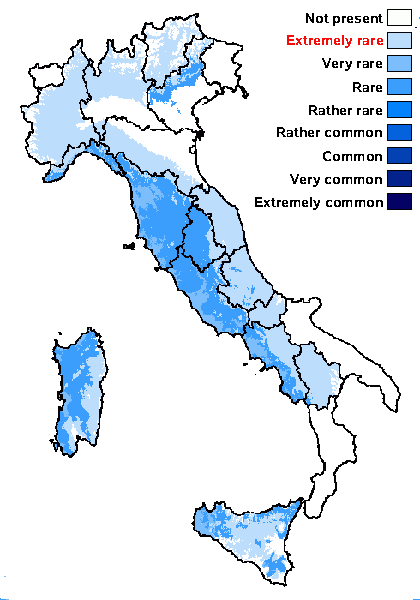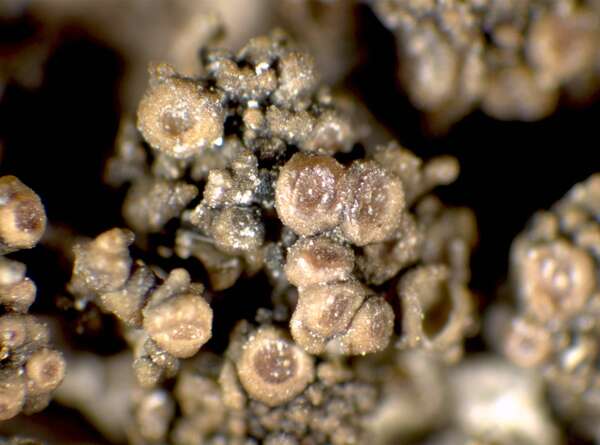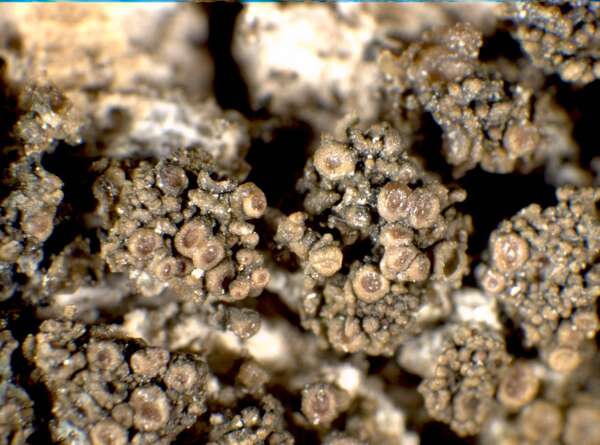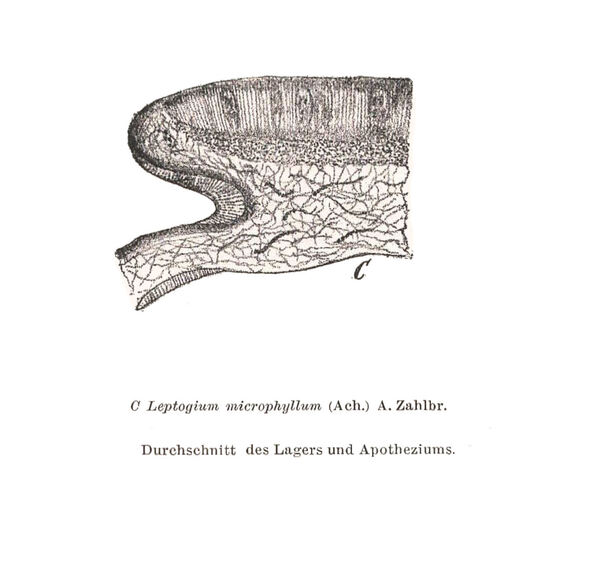Scytinium fragrans (Sm.) Otálora, P.M. Jørg. & Wedin
Fungal Divers., 64, 1: 290, 2013. Basionym: Lichen fragrans Sm. in Smith & Sowerby - Engl. Bot., 27: tab. 1912, 1808.
Synonyms: Collema capnichroum A. Massal.; Collema fragrans (Sm.) Ach.; Collema microphyllum Ach. nom. illegit.; Collema terrulentum Nyl.; Leptogium fragrans (Sm.) Leight.; Leptogium microphyllum (Gray) Leight.; Parmelia crispa var. prasina (Hoffm.) Ach.
Distribution: N - VG, Ven (Lazzarin 2000b), TAA (Nascimbene & al. 2007b), Lomb (Rivellini 1994), Piem, Emil (Fariselli & al. 2020), Lig (Giordani & Incerti 2008). C - Tosc (Frati & al. 2006b), Marc, Umb (Ravera 1998, Ravera & al. 2006), Laz, Abr, Mol (Caporale & al. 2008, Paoli & al. 2015), Sar (Zedda 2002). S - Camp (Ravera & Brunialti 2013), Bas (Potenza & al. 2014), Si (Ravera & al. 2023).
Description: Thallus small-foliose to subsquamulose, homoiomerous, slightly gelatinous when wet, to 0.5 cm diam, but individual thalli often crowded and covering larger surfaces. Lobes 0.3-1.5(-2) mm wide, up to 400 µm thick when wet, forming neat, more or less stellate rosettes or small pillows, more or less channelled, not swollen, often crenate, adpressed or ascending, dark olive-green to blackish, sometimes with globose, isidia-like papillae or flattened lobules along the margins and on upper surface. Upper and lower cortex absent (but sometimes a fragmentary, poorly developed pseudocortex may be present, especially on lower surface). Apothecia common, lecanorine, crowded in the centre of thallus, 0.4-0.7 mm across, at first immersed, then sessile and constricted at base, with a concave to flat disc, a thin to moderately thick, sometimes papillose thalline margin and a paler parathecial ring. Thalline exciple ecorticate or partly pseudocorticate; proper exciple euparaplectenchymatous; epithecium brownish; hymenium colourless, 80-110 µm high; paraphyses simple or sparingly branched, 1-1.5 µm thick at mid-level, progressively widening towards the apex; hypothecium yellowish. Asci (4-)8-spored, cylindrical-clavate, the apex strongly thickened, the apical dome K/I+ pale blue, with a downwardly projecting K/I+ deep blue tubular structure. Ascospores submuriform to muriform, with 2-5 transverse septa and 2-5 longitudinal septa, hyaline, oval or ellipsoid, 16-30 x 8.5-17 µm. Photobiont cyanobacterial (Nostoc, the cells in long chains). Spot tests: all negative. Chemistry: without lichen substances. Note: a mild-temperate lichen found on bark in open but mature, humid, broad-leaved woodlands; presently extremely rare or extinct in Northern Italy (the recent record from Lombardy requires confirmation), and most frequent in Tyrrhenian Italy.
Growth form: Foliose, narrow lobed
Substrata: bark
Photobiont: cyanobacteria, filamentous (e.g. Nostoc, Scytonema)
Reproductive strategy: mainly sexual
Most common in areas with a humid-warm climate (e.g. most of Tyrrenian Italy)
Commonnes-rarity: (info)
Alpine belt: absent
Subalpine belt: absent
Oromediterranean belt: absent
Montane belt: extremely rare
Submediterranean belt: extremely rare
Padanian area: absent
Humid submediterranean belt: rare
Humid mediterranean belt: very rare
Dry mediterranean belt: absent

Predictive model
Herbarium samples


P.L. Nimis; Owner: Department of Life Sciences, University of Trieste
Herbarium: TSB (11486)
2001/12/04


P.L. Nimis; Owner: Department of Life Sciences, University of Trieste
Herbarium: TSB (11486)
2001/12/04
Growth form: Foliose, narrow lobed
Substrata: bark
Photobiont: cyanobacteria, filamentous (e.g. Nostoc, Scytonema)
Reproductive strategy: mainly sexual
Most common in areas with a humid-warm climate (e.g. most of Tyrrenian Italy)
Commonnes-rarity: (info)
Alpine belt: absent
Subalpine belt: absent
Oromediterranean belt: absent
Montane belt: extremely rare
Submediterranean belt: extremely rare
Padanian area: absent
Humid submediterranean belt: rare
Humid mediterranean belt: very rare
Dry mediterranean belt: absent

Predictive model
| Herbarium samples |


P.L. Nimis; Owner: Department of Life Sciences, University of Trieste
Herbarium: TSB (11486)
2001/12/04


 Index Fungorum
Index Fungorum
 GBIF
GBIF



